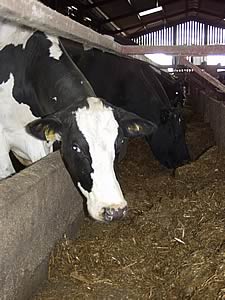 |
|||||||||
|
|||||||||||||||||||
|
|
Sainsbury’s Dairy Farmers Reduce Greenhouse Gas Emissions and Cut Costs 02/03/09
Dairy farmers in the Sainsbury’s Dairy Development Group (SDDG) are cutting greenhouse gas emissions and reducing their costs of production, by following a ground-breaking new carbon foot-printing programme.
The AB Agri Greenhouse Gas Model is the most in-depth measurement and monitoring initiative ever developed for use in agriculture, and is the first to receive certification from the Carbon Trust. It allows farmers to identify where losses are occurring, and highlights ways in which to curtail them. The AB Agri Greenhouse Gas model, which is monitored annually by an independent assessor, requires the farmer to complete an environmental scorecard on various aspects of his farming practices, as well as input numerical data into the model. “The combination of AB Agri’s agricultural experience and the Carbon Trust’s expertise in product carbon foot- printing has resulted in a robust model that is really working out in the field,” says Euan Murray from the Carbon Trust. “Our involvement has ensured the information calculated for each farm is PAS 2050 compliant, and comparable with results from other Carbon Trust certified product foot-printing projects.
|
||||||||||||||||||

|
|
||||||||||||||||||
| home | agri-services | pedigree
pen | news | dairy | beef | machinery BPS | property | organisations | site map |
|||||||||||||||||||
